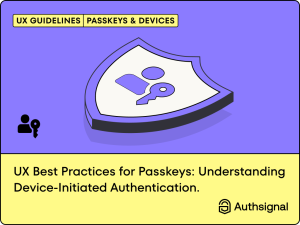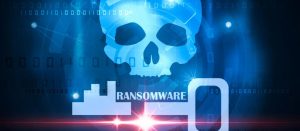
The widespread adoption of Generative AI (GenAI) is revolutionizing industries, driving unprecedented innovation and efficiency. However, this technological leap introduces significant cybersecurity challenges. SAP, a global leader in enterprise software, has outlined its comprehensive approach to GenAI cybersecurity, offering crucial insights for Chief Information Security Officers (CISOs) and security professionals. Leveraging SAP’s strategic framework, the SANS Institute presents five actionable cybersecurity considerations to navigate the GenAI landscape effectively.
1. Embrace a Proactive Security Methodology
SAP’s GenAI cybersecurity strategy, based on the National Institute of Standards and Technology Cybersecurity Framework (NIST CSF), emphasizes a proactive security approach. This methodology encompasses governance, identification, protection, detection, response, and recovery, forming a robust foundation for integrating GenAI into cybersecurity strategies.
SAP advocates for a multilayered defense strategy, acknowledging GenAI’s unique vulnerabilities and ensuring mechanisms are in place to counteract potential threats. Organizations should enhance SAP’s methodology with the following actionable steps:
- Governance: Establish a governance model to oversee GenAI policies and projects, ensuring compliance with ethical standards and legal requirements. Set up a cross-functional governance board including stakeholders from security, legal, IT, and business units.
- Identification: Develop an asset management system to catalog and classify data, algorithms, models, and infrastructures involved in GenAI operations. Assess the vulnerability of critical assets to attacks, facilitating a risk-based security approach.
- Protection: Implement AI-specific security practices, such as securing AI data pipelines, protecting model integrity, and ensuring the confidentiality of AI training data through techniques like federated learning and differential privacy.
- Detection: Use AI-driven analytical tools to identify subtle anomalies in system behavior that might indicate a security breach, enabling faster and more accurate detection.
- Response: Develop GenAI-informed incident response plans, including procedures for isolating affected systems, conducting forensics on AI models, and securely restoring services.
- Recovery: Implement strategies for rapid recovery, leveraging GenAI technologies to minimize downtime and data loss, and conducting simulations to ensure effectiveness and efficiency.
This enhanced methodology prepares organizations to tackle GenAI-related security challenges and leverage GenAI advancements securely and efficiently.
2. Understand and Address GenAI-Specific Risks
SAP’s strategy outlines three critical risk categories for GenAI: adoption, vulnerability, and weaponization. These categories emphasize the need for a nuanced approach to GenAI’s unique challenges.
To navigate these risks effectively, organizations should:
- Adoption Risks: Prioritize awareness and training to mitigate human error and ensure responsible use of GenAI. Establish guidelines for safe practices and foster a culture of security mindfulness among users and developers.
- Vulnerability Risks: Implement rigorous security protocols for GenAI models, conduct regular vulnerability assessments, and adopt secure coding practices. Stay informed about emerging GenAI-specific threats.
- Weaponization Risks: Incorporate threat intelligence into security strategies to prepare for the potential misuse of GenAI by adversaries. Understand how GenAI can enhance the sophistication of cyber threats and prioritize continuous learning among security teams.
A proactive stance, characterized by ongoing education, robust security practices, and an agile response strategy, is essential to safeguard digital assets while harnessing GenAI’s transformative potential.
3. Prioritize Data Security and Integrity
In the GenAI realm, SAP emphasizes the paramount importance of data security, underpinned by rigorous data classification, labeling, and handling protocols. Traditional security measures are insufficient for GenAI’s complexity, necessitating advanced protections.
Key actions for bolstering data security in GenAI applications include:
- Enhanced Data Management: Develop comprehensive data governance frameworks to categorize and label data, ensuring its integrity throughout its lifecycle. Implement strict controls over data access, usage, and storage.
- User Training: Train users on acceptable GenAI usage, data classification, and compliance with emerging global legislation and industry standards.
- Advanced Monitoring and Access Control: Use next-generation monitoring tools leveraging AI to detect anomalies in data access and usage. Implement dynamic access controls that adapt to the evolving risk landscape.
- Encryption and Anonymization: Employ encryption techniques for data at rest and in transit, and anonymize sensitive data used in GenAI model training to prevent exposure of identifiable information.
By prioritizing these enhanced security measures, organizations can ensure the confidentiality, integrity, and availability of data central to GenAI technologies, mitigating risks and safeguarding against potential breaches.
4. Brace for Emerging GenAI Threats
SAP’s white paper highlights novel vulnerabilities introduced by GenAI, such as prompt injection, glitch tokens, and AI hallucinations. These unique threats require cutting-edge defensive strategies.
To counter these emerging threats effectively, organizations should:
- Robust Validation Processes: Establish rigorous validation protocols for GenAI outputs, ensuring thorough security checks before deployment.
- Continuous Security Training: Equip teams with the latest knowledge of GenAI threats through ongoing training and workshops.
- Collaborative Threat Intelligence: Engage in threat intelligence sharing platforms to stay informed about the latest GenAI vulnerabilities and attack vectors.
By adopting these strategies, CISOs can prepare their organizations to confront and mitigate GenAI’s unique challenges, ensuring that innovation remains a force for growth rather than a vulnerability to be exploited.
5. Leverage GenAI to Strengthen Cybersecurity Defenses
SAP acknowledges the dual nature of GenAI as both a potential cybersecurity challenge and a significant ally in enhancing security measures. Integrating GenAI into security processes offers innovative avenues for automation, advanced threat detection, and overall enhancement of an organization’s cybersecurity posture.
To capitalize on GenAI’s potential, organizations should:
- Automate Security Processes: Use GenAI-driven technologies to automate routine and complex security tasks, increasing efficiency and allowing cybersecurity teams to focus on strategic planning and incident response.
- Enhance Threat Detection: Leverage GenAI’s capacity to analyze vast datasets, identifying subtle, emerging threats more swiftly and accurately.
- Refine Risk Management: Apply GenAI tools for dynamic risk assessment, offering real-time insights to adapt security strategies to new threats.
- Foster Continuous Learning: Establish a culture prioritizing ongoing training and education to ensure security teams, developers, and all staff are proficient in utilizing GenAI for security.
- Encourage Collaborative Analysis: Promote transparent AI use and collective analysis of GenAI results, ensuring a broad spectrum of expertise is applied to understanding GenAI outputs.
Incorporating GenAI into cybersecurity strategies not only mitigates associated risks but also leverages its vast capabilities to secure digital assets more effectively. By fostering continuous learning and collaborative analysis, organizations can stay ahead of cyber threats and maximize GenAI’s benefits, transforming potential vulnerabilities into formidable cybersecurity strengths.
Moving Forward
SAP’s GenAI cybersecurity strategy provides CISOs with a vital framework for managing the complexities of GenAI in cybersecurity. Focusing on proactive security methodologies, understanding GenAI-specific risks, and utilizing GenAI to strengthen defenses, this strategy’s success hinges on continuous training. As the GenAI landscape evolves, equipping teams with the knowledge to navigate and leverage these advancements becomes crucial. Training ensures that CISOs and their teams are not only prepared to tackle emerging threats but are also proficient in harnessing GenAI’s potential to secure the digital future effectively.
About DT Asia
DT Asia began in 2007 with a clear mission to build the market entry for various pioneering IT security solutions from the US, Europe and Israel.
Today, DT Asia is a regional, value-added distributor of cybersecurity solutions providing cutting-edge technologies to key government organisations and top private sector clients including global banks and Fortune 500 companies. We have offices and partners around the Asia Pacific to better understand the markets and deliver localised solutions.
How we help
If you need to know more about CISOs Navigating the GenAI Tide, you’re in the right place, we’re here to help! DTA is SANS Institute’s distributor, especially in Singapore and Asia, our technicians have deep experience on the product and relevant technologies you can always trust, we provide this product’s turnkey solutions, including consultation, deployment, and maintenance service.
Click here and here and here to know more: https://dtasiagroup.com/sans/










